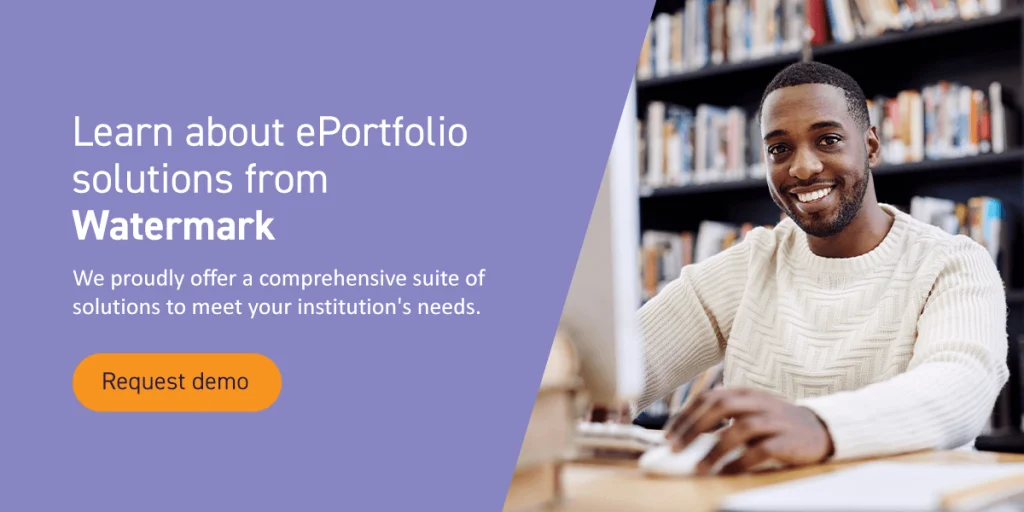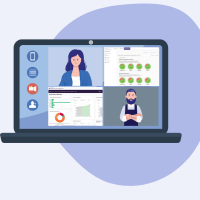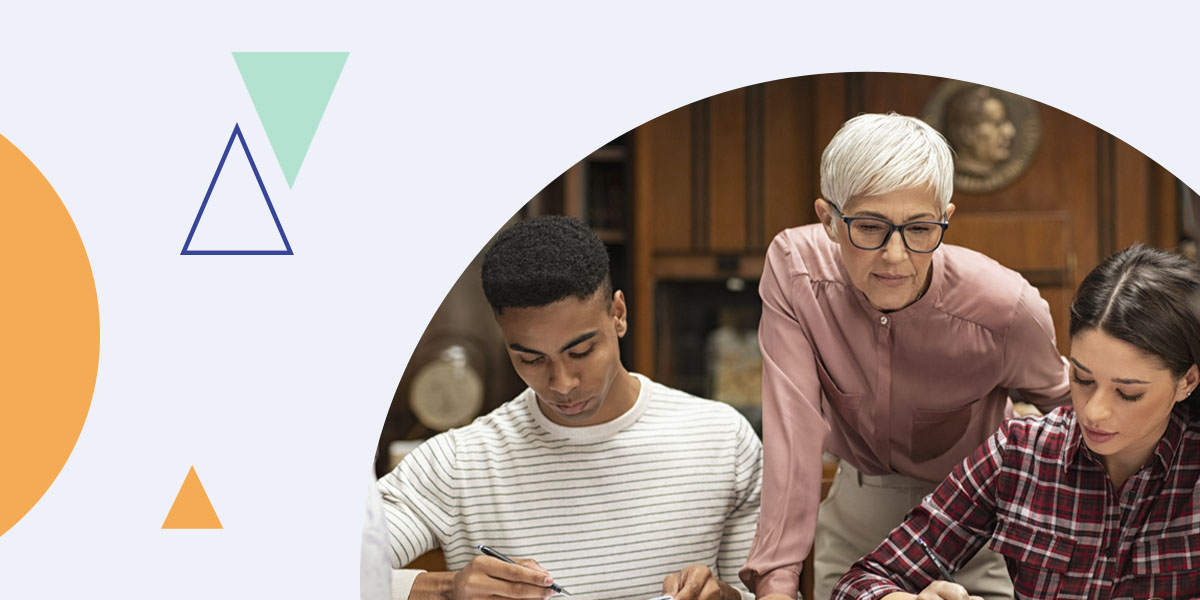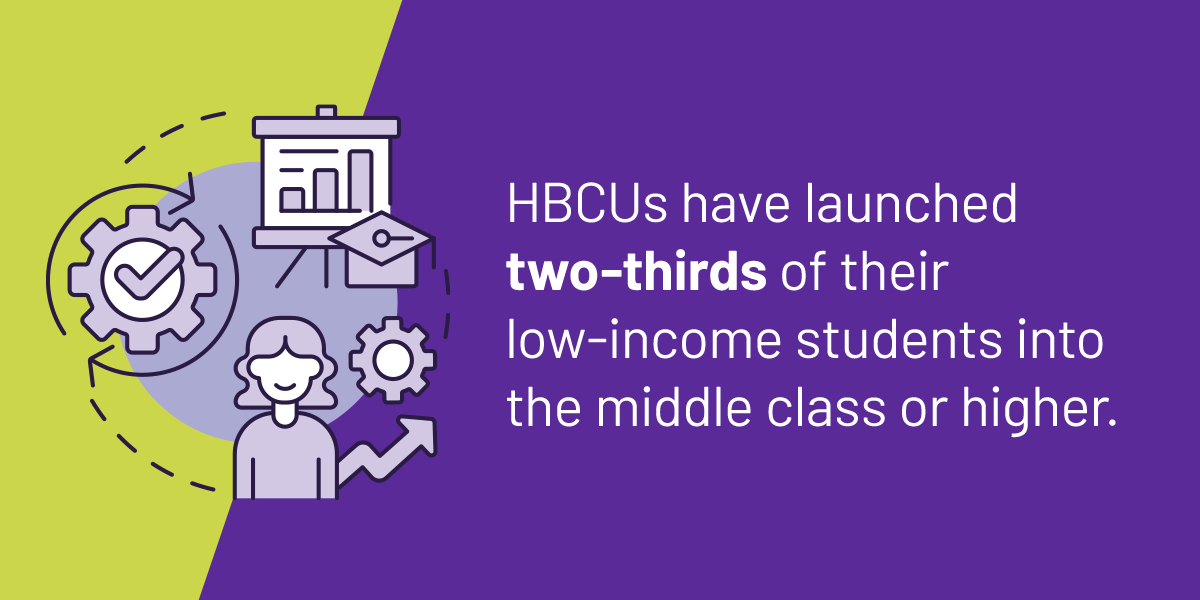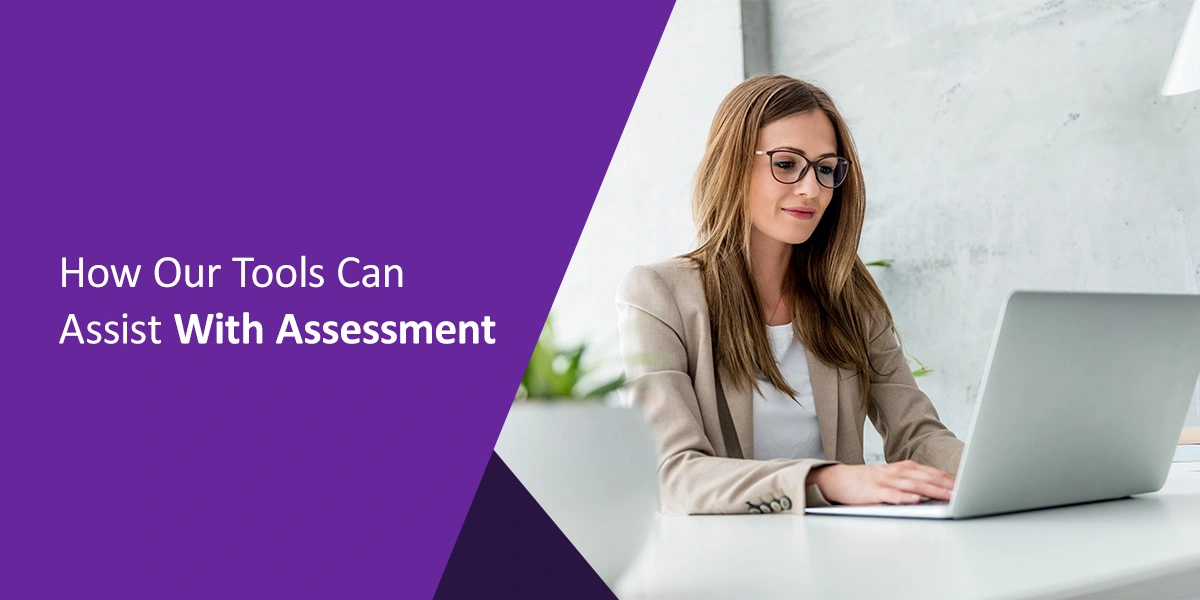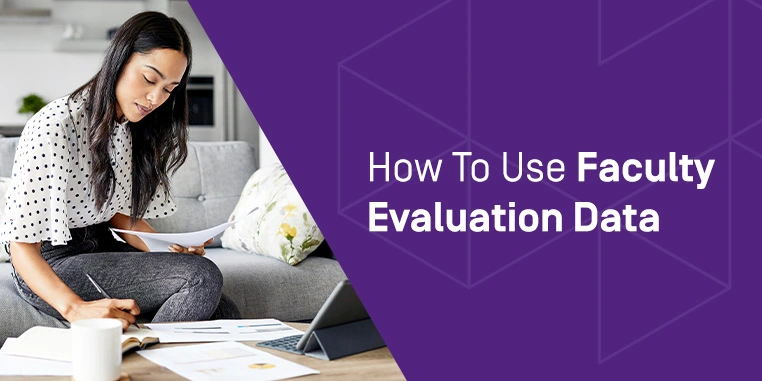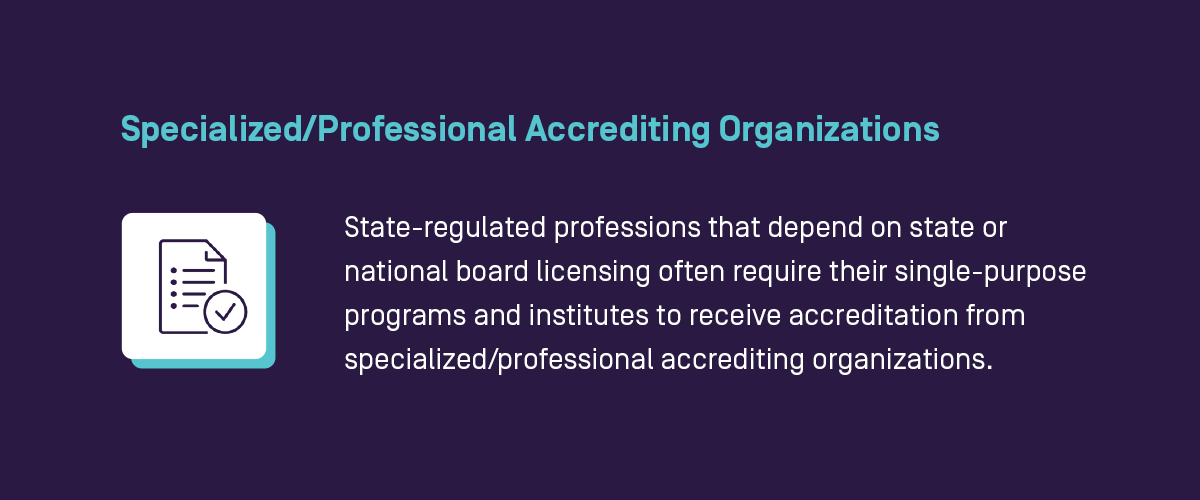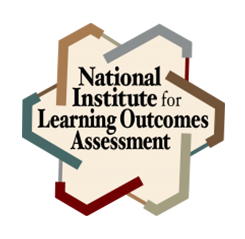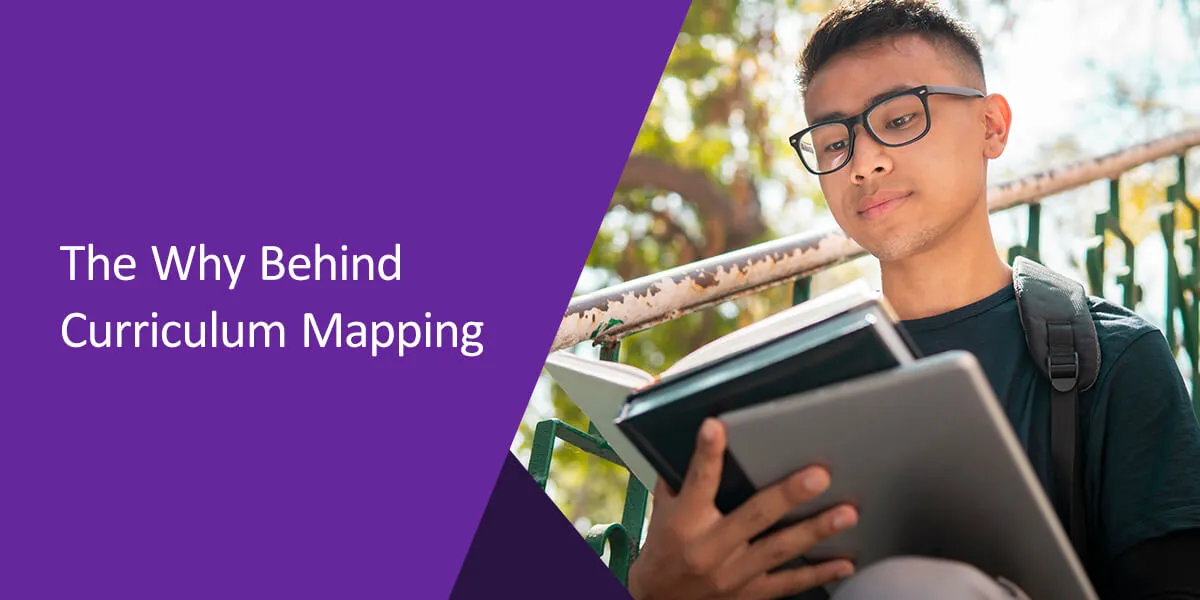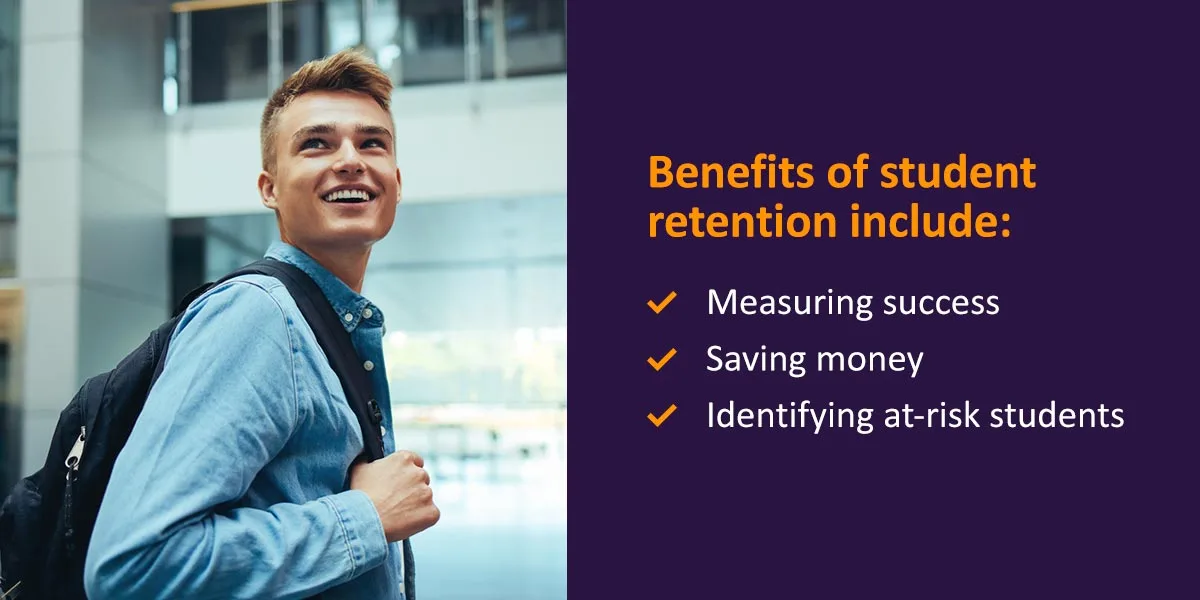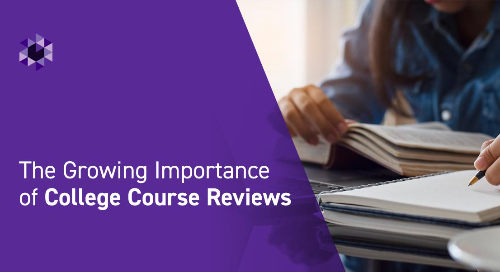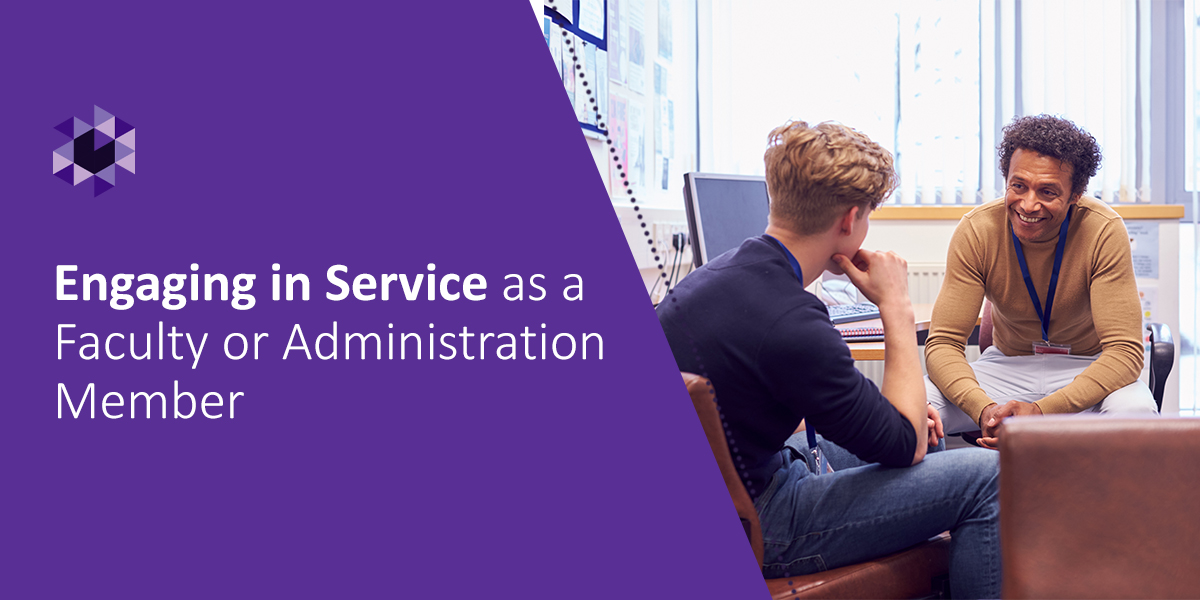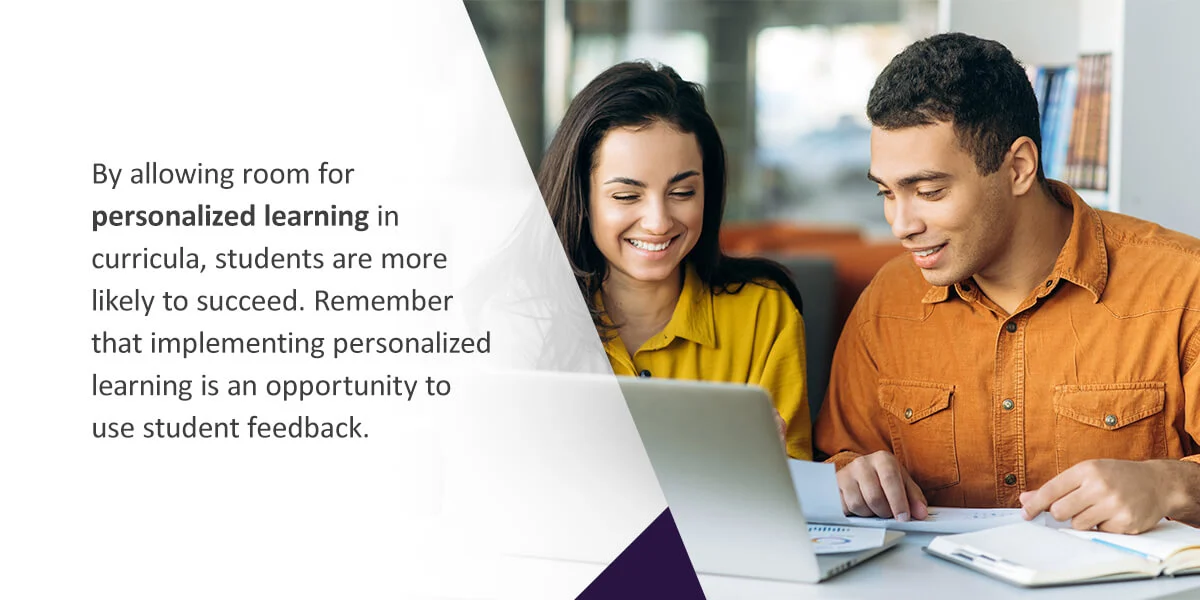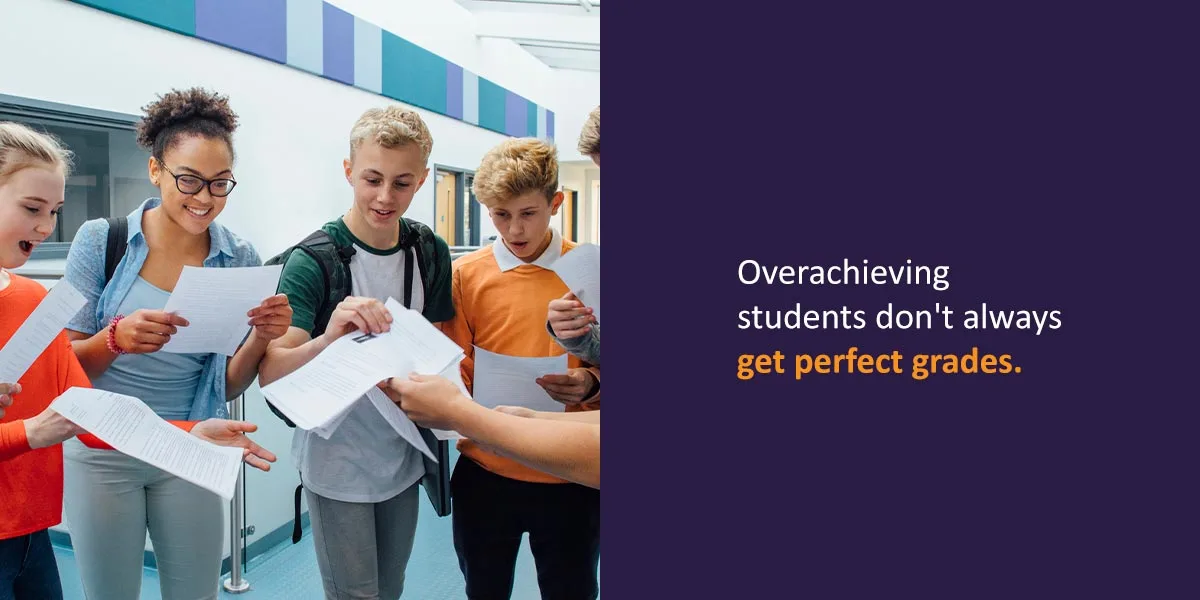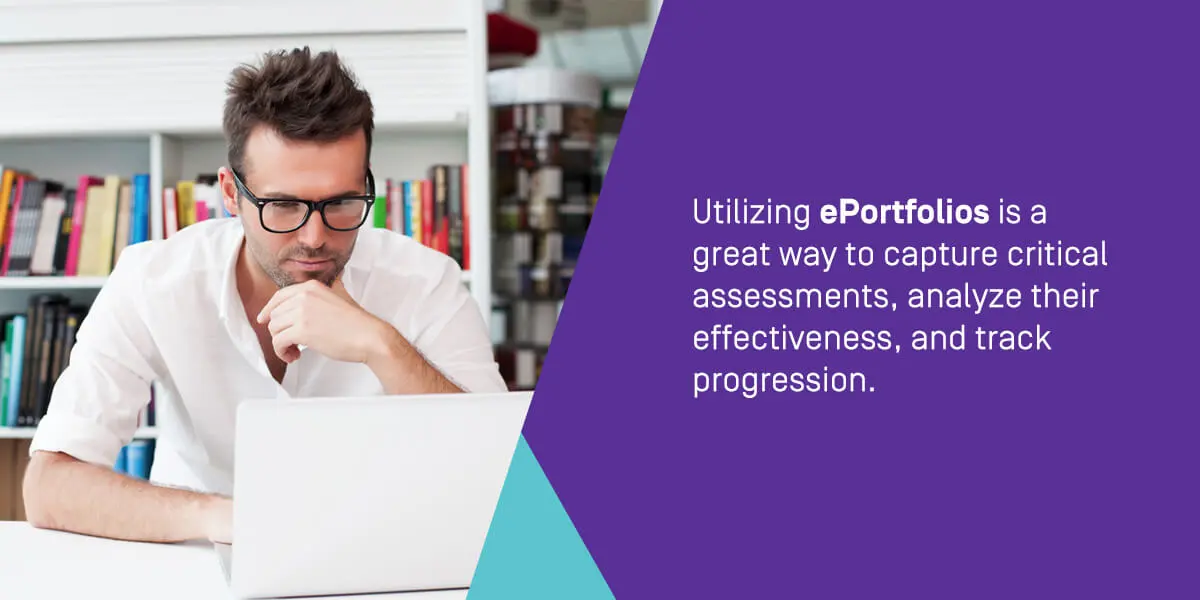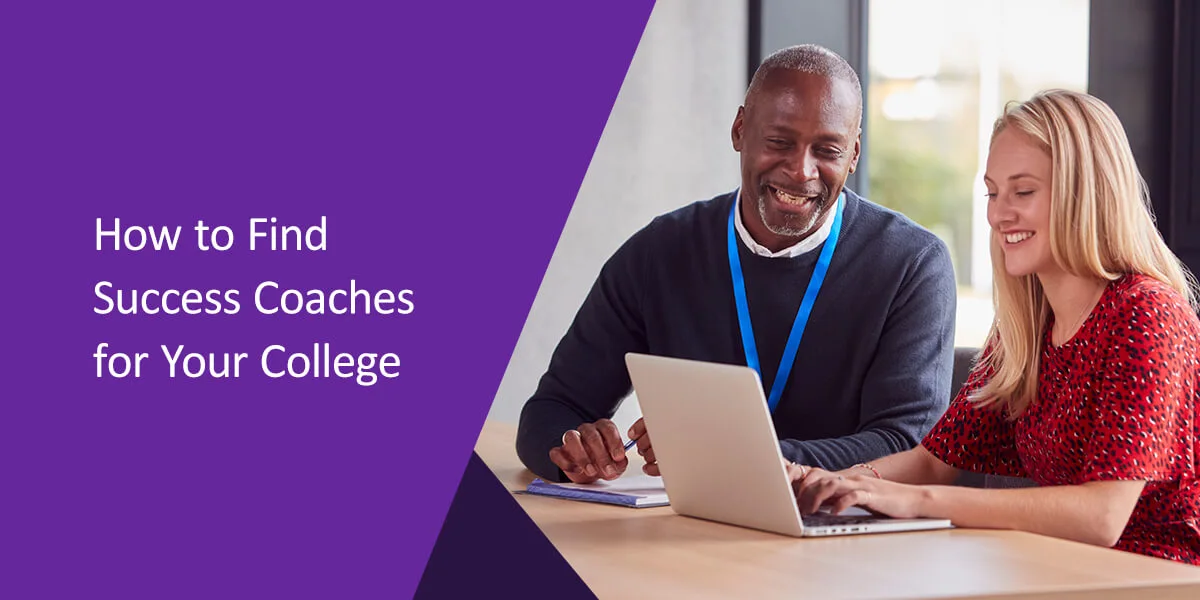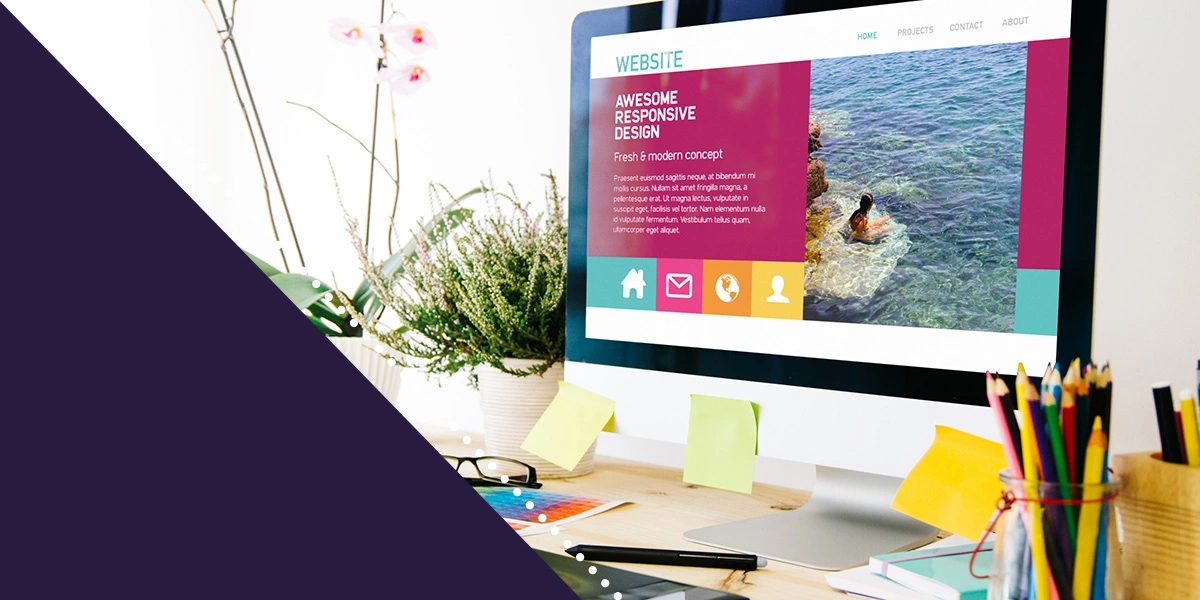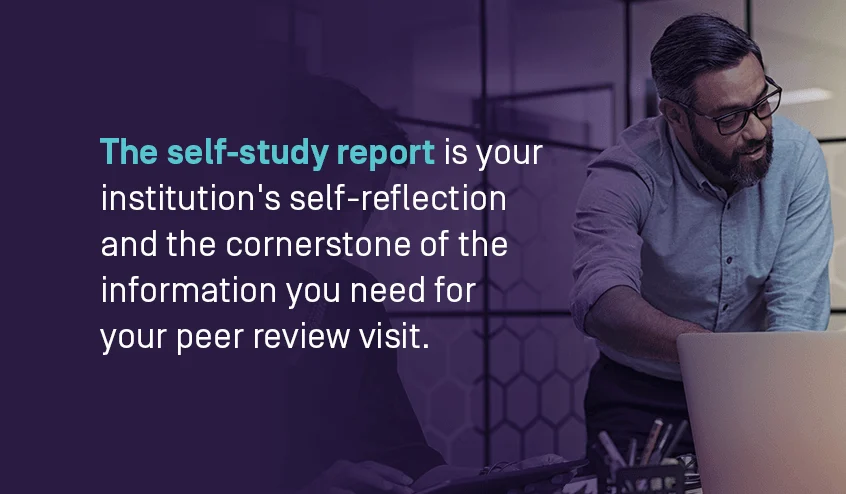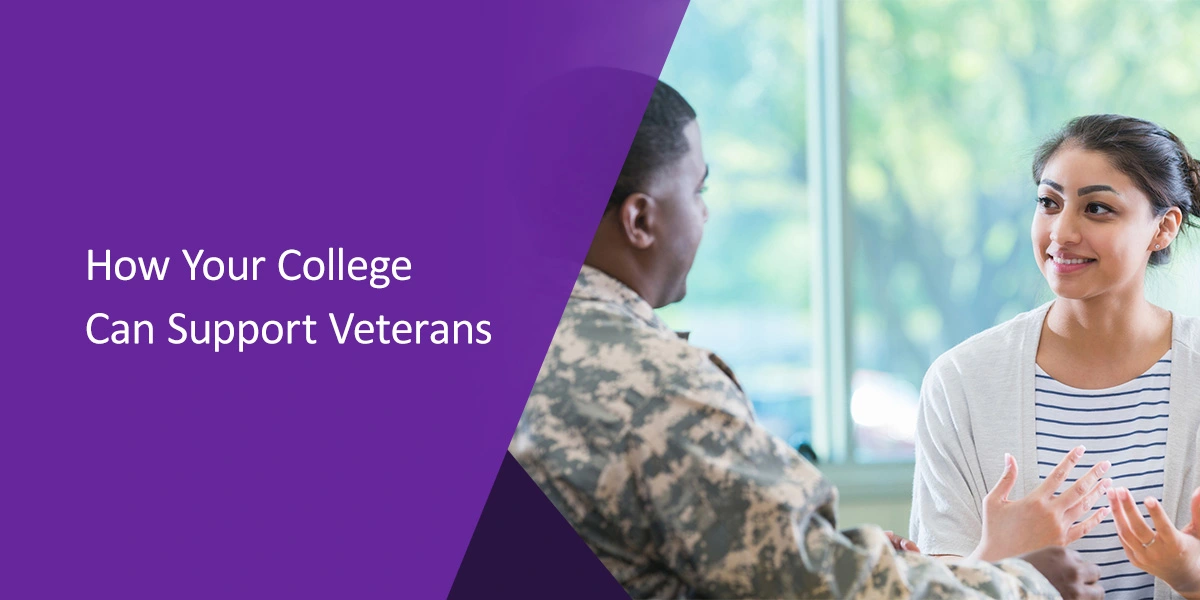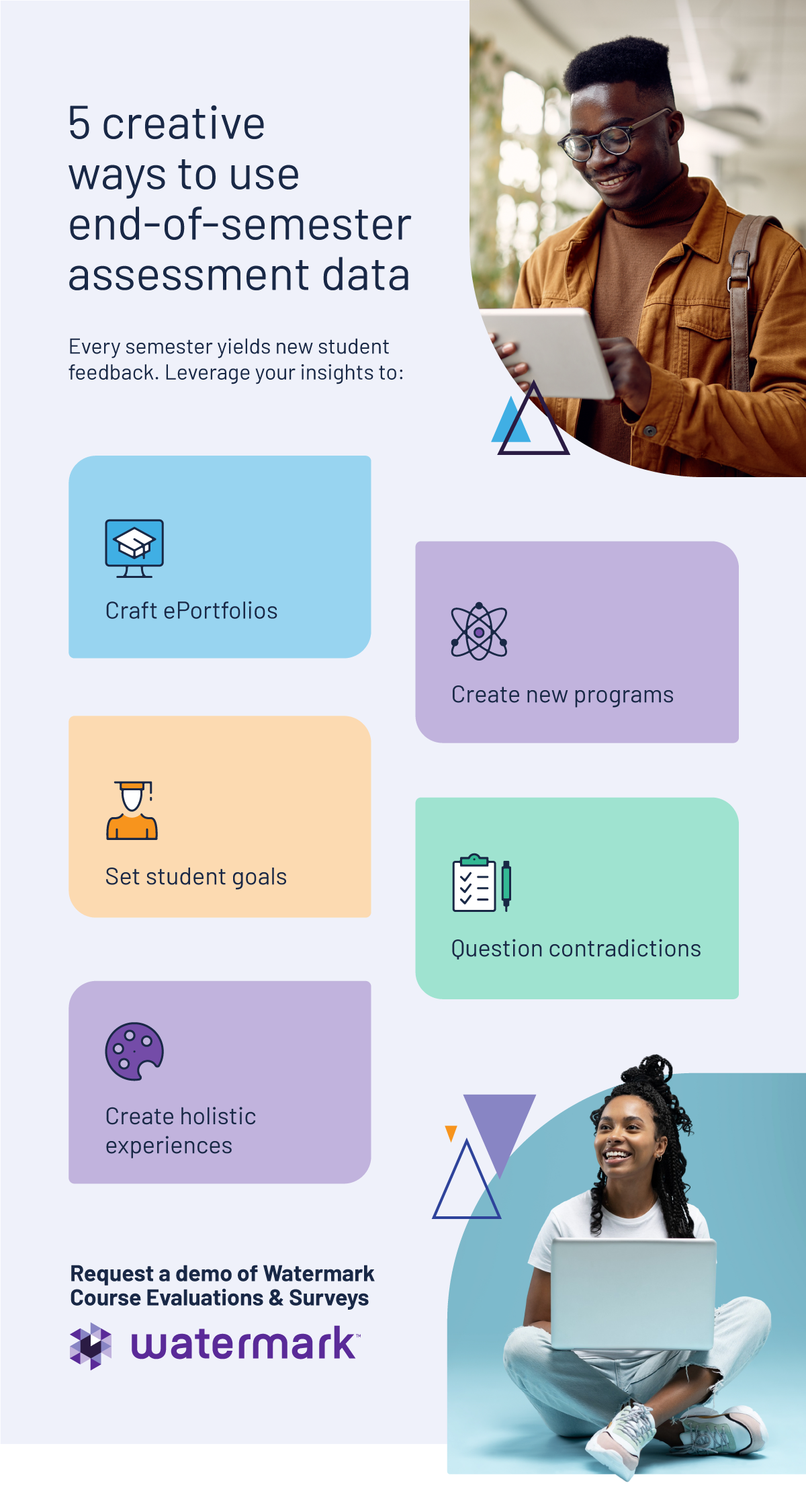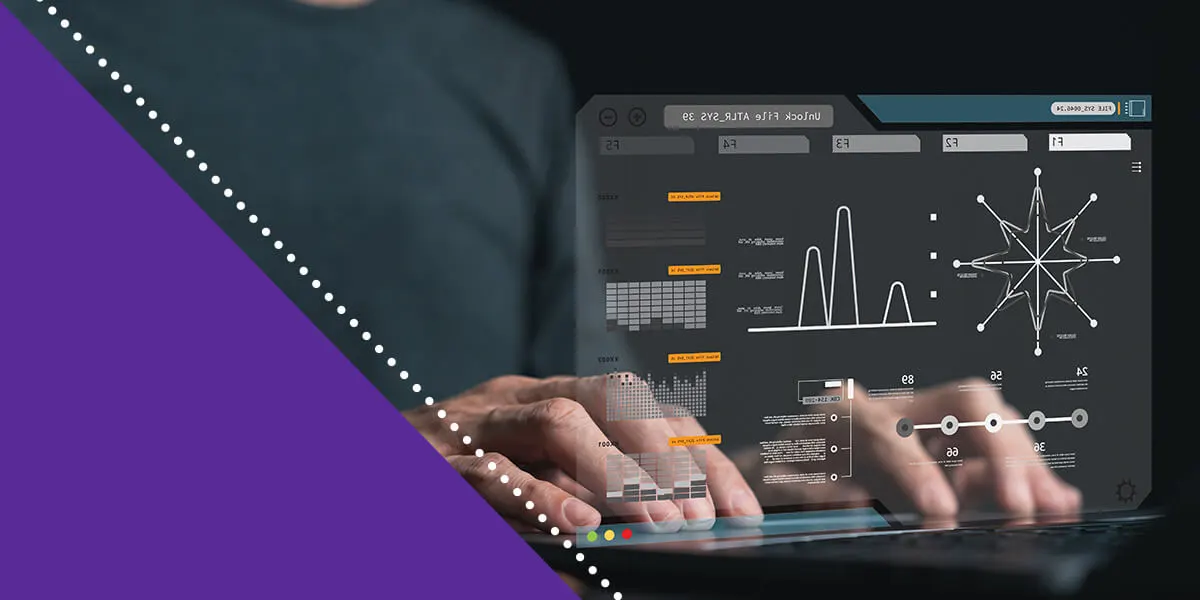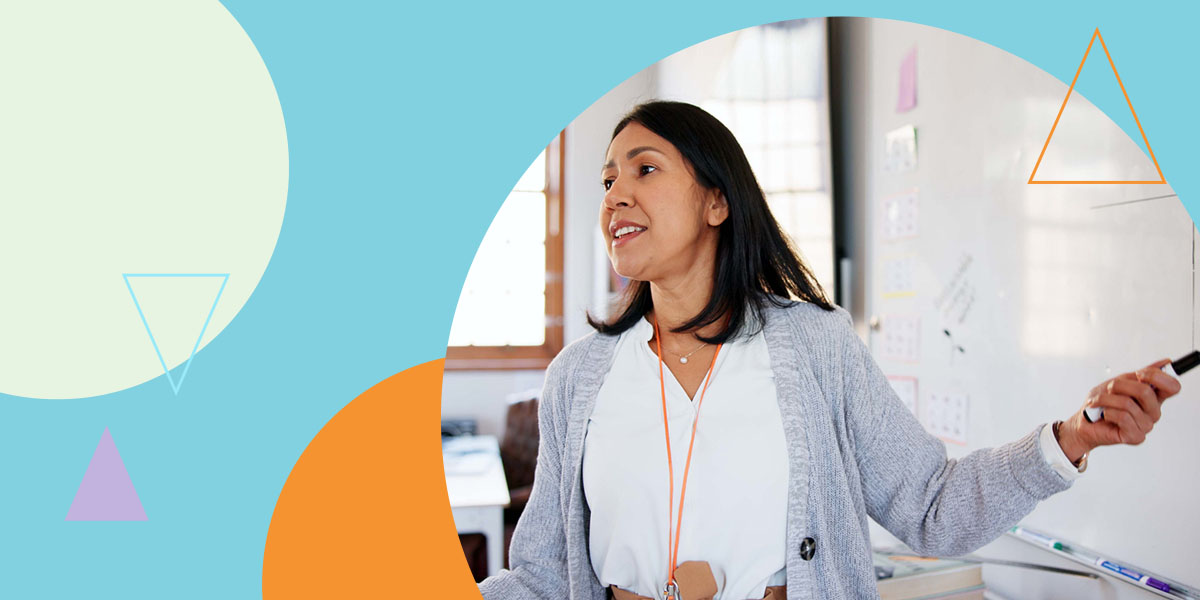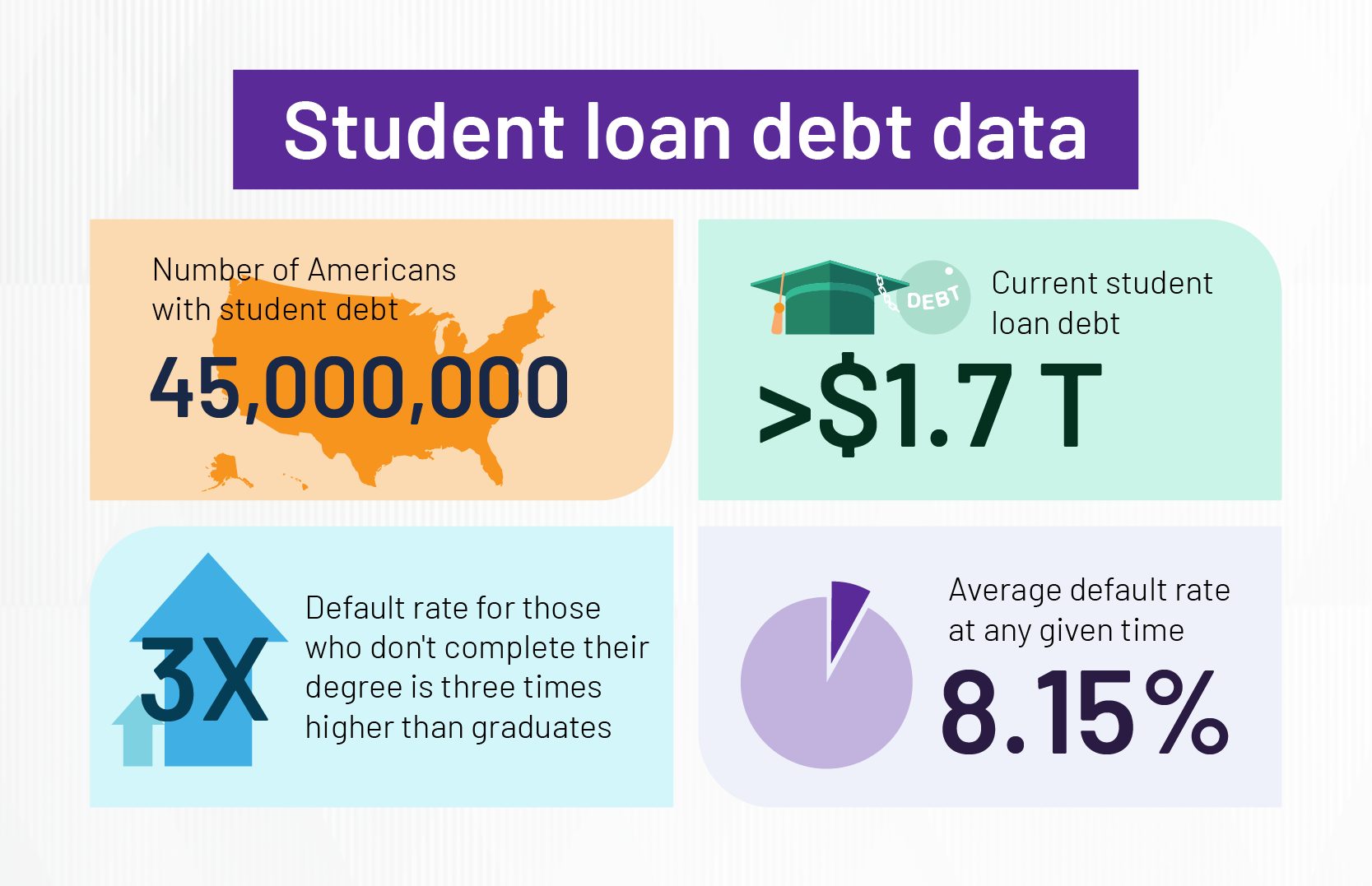
There are many purposes of ePortfolios, and higher education institutions can integrate these tools into curricula to facilitate collaboration and document student growth and learning outcomes. A well-executed ePortfolio software in higher education can promote a deeper sense of learning and encourage students to create lifelong record-keeping tools to aid in career and professional development.
Students often use ePortfolios to record academic success and reflect on their strengths and opportunities for growth, but higher education institutions can derive meaningful data about program effectiveness and institutional objectives by accessing these tools. These rich resources offer many advantages for students, faculty, departments, and institutions.
How to use an ePortfolio in higher education
Students, faculty, and staff can benefit from integrating ePortfolios into higher education. These records offer many unique ways to document achievements, enhance collaboration, and recognize trends. You can use ePortfolios to:
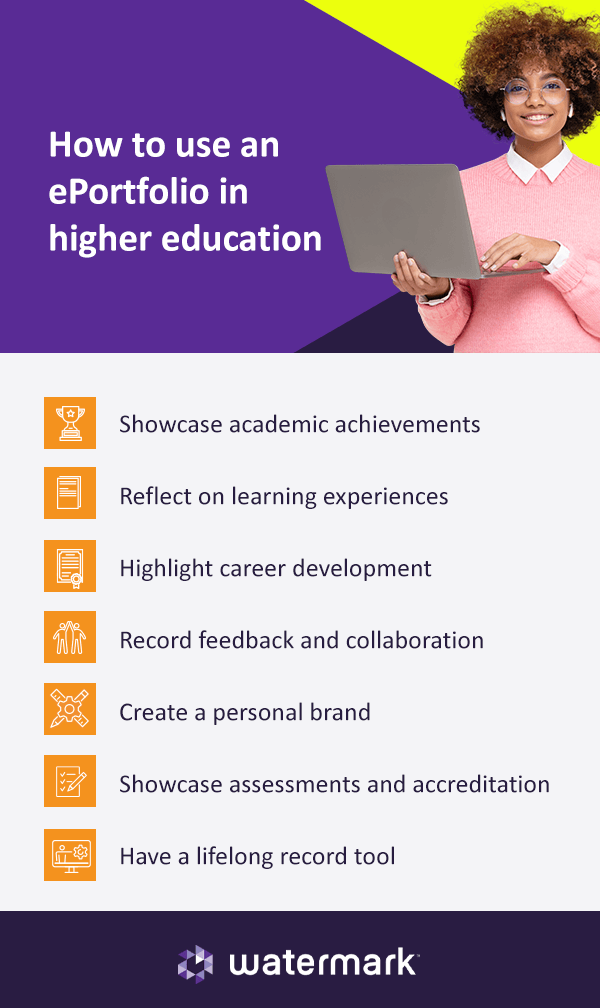
- Showcase academic achievements: Students can record their academic success within their ePortfolios. Research papers, projects, awards, and presentations demonstrate each student’s skills and knowledge to potential employers or graduate school admissions boards.
- Reflect on learning experiences: A significant benefit of an ePortfolio for higher education is empowering reflection. Students can refer to their ePortfolios to document their growth throughout their study program, helping them understand their learning processes. Institutions also use student ePortfolios to identify gaps in curriculum and strengths within programs.
- Highlight career development: Students with a clear path after graduation can tailor their ePortfolios to highlight their industry knowledge and skills to align with their career goals. This organized record can help students when applying for internships, graduate schools, or careers.
- Record feedback and collaboration: Instructors and students can interact within ePortfolios. Instructors can easily provide feedback to help improve the student’s work, and peers can collaborate to promote deeper growth and learning.
- Create a personal brand: By showcasing their best work, students can define their personal brand and create a visually appealing way to share their online presence with interested parties. An ePortfolio can serve as a unique way to reflect skills, achievements, and interests.
- Facilitate assessment and accreditation processes: Higher education institutions can use student ePortfolios to evaluate learning outcomes. You can encourage instructors to integrate ePortfolios into the curriculum to track progress and ensure program goals align with student interests and understanding. This can provide evidence of your program’s effectiveness and contribute to assessment and accreditation processes.
- Maintain a comprehensive record of work: Like a resume, ePortfolios have value beyond graduation. Students can continue exploring their interests and updating their ePortfolios to create a comprehensive record of their growth and interests. The ePortfolio can serve as a valuable tool for advancing careers or seeking additional educational opportunities.
Supporting distance learning with ePortfolios
Using ePortfolios has been recognized as a high-impact practice by thought leaders such as the Association of American Colleges & Universities (AAC&U). The opportunities that ePortfolios provide benefit in-person instruction and distance learning opportunities. These rich resources ensure distance learning experiences are as powerful and beneficial as those on your campus. Here are several ways you can create a robust distance learning experience with ePortfolios:
1. Deliver high-quality instruction
An ePortfolio solution provides the opportunity to design interactive activities aligned with critical general education competencies and learning outcomes. Faculty can customize assignments using templated tools to support embedded video, literature analysis, and more. They can easily monitor student progress to provide targeted support and adjust teaching practices in real time, supporting formative assessment best practices.
Faculty can also assess gen-ed competencies and learning outcomes with rubrics while assigning scores to send back to the LMS grade book, eliminating duplicate work between assessment and grading.
2. Make ePortfolios available anytime, anywhere
Well-designed ePortfolios are responsive, meaning faculty and students can upload, download, and stream content on any device. That’s particularly useful for distance learning, where students and staff must share artifacts electronically. An ePortfolio solution that integrates with your LMS makes it easy for students and faculty to navigate between systems and access activities and learning artifacts across systems. An ePortfolio lets a student easily pull artifacts from the LMS into their timeline and create a showcase that represents their full body of work effectively.
3. Encourage students and faculty to interact
Distance learning opportunities often do not present the same opportunities for interacting with instructors and peers. However, ePortfolios can encourage these interactions while providing a means of gathering feedback for improvement.
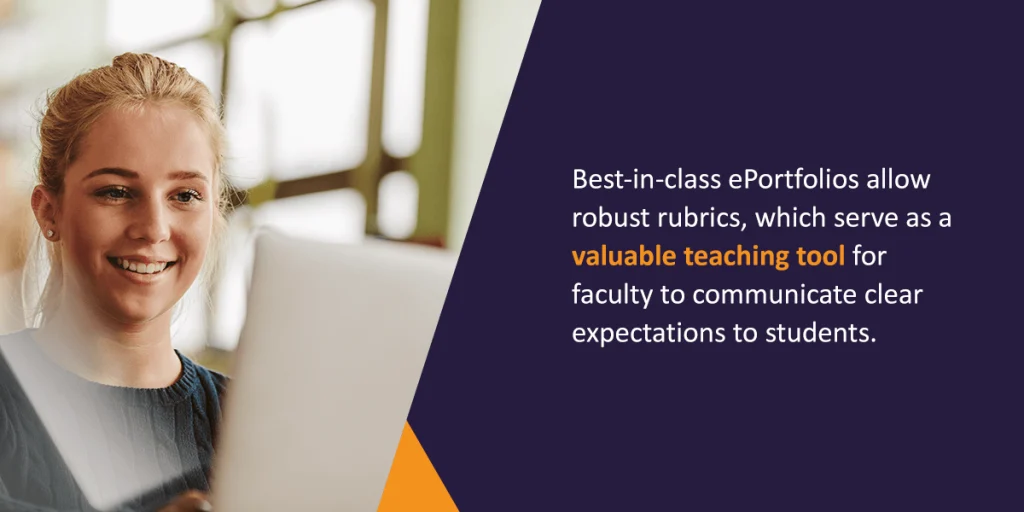
Best-in-class ePortfolios allow robust rubrics, which serve as a valuable teaching tool for faculty to communicate clear expectations to students. They also include features that make it easy for faculty to provide real-time feedback to students submitting coursework, including features like in-text annotation. An ePortfolio solution lets faculty align rubrics to standards and competencies, easily use the rubrics to assess student work, and provide clear guidance to students on areas for improvement.
4. Empower students to reflect on their learning
The use of ePortfolios lets students reflect on and engage with the things they’ve learned across the duration of their programs and between institutions. This helps students develop a sense of personal ownership over their learning and provides a comprehensive record of achievement they can take with them after graduation. That sense of ownership can be particularly important to distance learners, who may not experience the full range of social supports that come with on-campus learning. The best ePortfolio solutions provide both faculty and students with powerful tools to track their learning over time. These tools also ensure students develop their professional voice and skills to communicate their knowledge and accomplishments to peers and potential employers.
5. Gain rich assessment insights
Because an ePortfolio captures a comprehensive view of student work, it’s the perfect format for measuring how much a student has truly learned. This is especially valuable for non-traditional class formats or lessons that may not benefit from a standard measurement system. An ePortfolio solution should ensure that faculty can:
- Gain a holistic picture of individual and aggregate student achievement.
- Get a clear picture of student performance over time.
- Break down results by demographics, cohort, and other key metrics.
Because ePortfolios capture a comprehensive view of student progress over multiple years, these tools support faculty advisors, mentors, and administrators to better assist students throughout their academic experiences. With ePortfolios, educators can more confidently ensure students have the services they need to reach critical milestones and complete all necessary program requirements. This is especially important for distance learners who might not benefit from as many face-to-face interactions with trusted advisors or from on-campus support services.
6. Close the loop
Closing the loop — it’s one of the worthiest goals and biggest challenges in higher education. One of the greatest barriers to meaningful learning outcomes from assessment is the time required to analyze data, develop action plans for improvement, and implement changes. Fortunately, ePortfolios contribute to making this more achievable. Because learning artifacts are naturally captured within an authentic teaching and learning system, there’s no additional time needed to digitize student work and manage assessment processes.
By systematically collecting and reporting on ePortfolio data across programs, faculty and administrators can track student progress toward key outcomes more effectively and develop action plans to support targeted improvements. Once you develop these plans, you can translate them into changes in instruction delivered through ePortfolios. Then, you can capture this data in real time to monitor the impact of improvement efforts. Whether you use ePortfolios in conjunction with a traditional classroom setting, distance learning, or both, this tool can be a powerful addition to your institution.
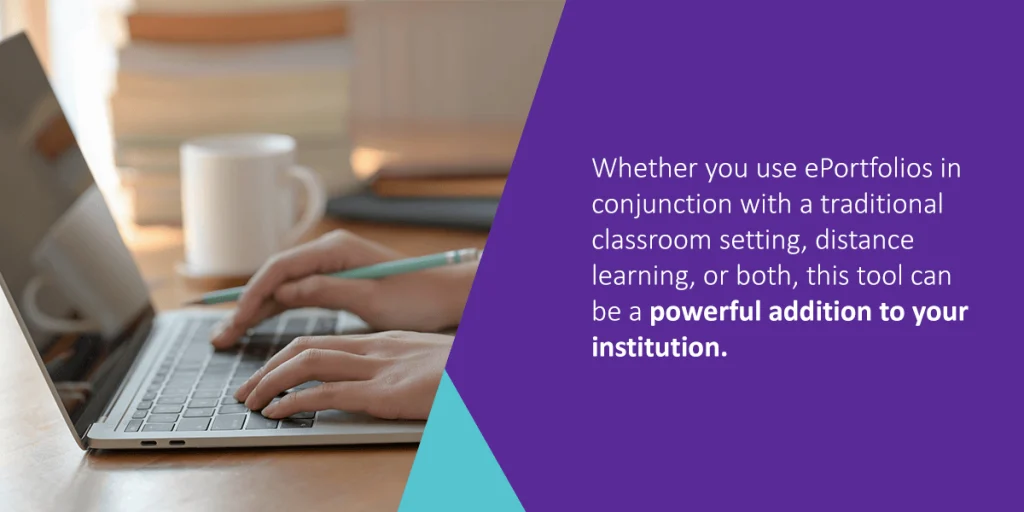
How to weave ePortfolios into higher education initiatives
Many institutions use ePortfolios to encourage students to exemplify their best work, but there are several other ways you can leverage these tools to impact your institution. You can use ePortfolios to support student learning and reach institutional initiatives. Whether you’re considering adopting ePortfolios or need to kick-start an existing ePortfolio initiative, there are several key questions to consider:
What do you want your initiative to achieve?
At a basic level, an ePortfolio is a tool that lets students compile and document work electronically. However, when you look past that brief definition and start to think about how using ePortfolios can benefit your community, you can gather a multitude of perspectives. Do you want students to use their ePortfolios as professional portfolios for their job search or graduate school applications? Do you want them to engage in reflective learning? Do you want to integrate service learning or extracurricular activities into the ePortfolio? Before you start thinking about how you want the “e” part of ePortfolios to work, you’ll need to decide what you want to achieve with your initiative.
How can you align ePortfolios with student experiences?
Once you’ve set intentions for what you want to achieve and how you want your students to benefit from using ePortfolios, consider how you want to integrate ePortfolios into the educational experience. Initiatives can fall flat if students don’t understand the initiative’s benefit or lack sufficient motivation to participate. “Do this because I told you to” is rarely enough.
The most successful uses of ePortfolios are often initiatives where institutions weave ePortfolios into every student’s educational experience. Creating an ePortfolio transforms from just a task that students do into a part of what it means to be a student. There are many different ways to embed an ePortfolio initiative in student learning and many questions to ask to help you formulate your initiative. Knowing how the ePortfolio will become part of each student’s educational experience early will drive how you develop and design your initiative. This knowledge will also help identify other stakeholders and help you communicate and engage them in the initiative.
Do you want to involve assessment in your initiative?
The use of ePortfolios is a powerful way to show what students know and support various assessments, from student learning outcomes to extracurricular and service learning activities. This tool can give you the flexibility of assessing work more holistically with a set of learning outcomes, or allow you to assess components of the portfolio. If you would like to leverage your ePortfolio initiative to support assessment, then there are several decisions to make:
- What skills or outcomes you are assessing
- How you want to set up the assessment measurement
- Who will assess the work
- Whether you want to assess or grade the ePortfolios if the measurement is the same for both
Some higher education institutions don’t envision their ePortfolio initiative as related to their assessment plans. However, even if you use ePortfolios to support other goals, you might want to consider whether assessing the ePortfolios can strengthen your initiative. Adding assessment to your ePortfolio process can provide powerful insight into what your students are learning.
Once you’ve defined your initiative, decided how you want to weave ePortfolios into the student experience, and created your assessment plan, there are just a few more areas to consider. Communication is key to the success of an ePortfolio initiative. Not only should students understand the benefits of an ePortfolio, but faculty and staff should too. Your community’s support will greatly influence your initiative’s success. While you may think about ePortfolios primarily as a technological tool, it is most important to think about the non-technical considerations.
Student and institution success with ePortfolios
Institutions have been recognizing how ePortfolios can bolster initiatives and establish new goals. Several have documented their success with these rich tools for reaching specific milestones.
Gonzaga University implemented an assessment management system to support candidates and manage activities in the field. Using ePortfolios, Gonzaga University could easily log candidate placement hours while saving time, increasing accuracy, and ensuring requirement completion. Faculty could also use the software to deliver real-time feedback, enriching the learning experience and empowering staff to intervene proactively if a student fell behind.
East Carolina University found a broad solution for enabling leadership and reflecting, retaining, and managing student work. Using ePortfolios, this institution collected data to align activities with courses, analyzed scores to identify success predictors, developed and tested hypotheses to inform decisions, and more. East Carolina University used this tool to align accreditation and assessment efforts across departments and revise the approach for measuring program effectiveness and quality.
Point Loma Nazarene University found that ePortfolios added immense value for students. Students were able to use ePortfolios to gather feedback for improvement, prepare a personal brand and professional voice, and build confidence in their abilities to think critically, reflect, write, and use technology effectively. This university noted that ePortfolios serve as a critical input for improving programs and designing new offerings to serve students better.
Student Jessica Fillingame also expressed her success with ePortfolios and detailed the process of creating her own when she said: “Creating the portfolio took an entire semester, working on small bits at a time. The most challenging part of the process was narrowing my thoughts into consolidated statements that defined me as a person. After gathering many words and undergoing a process of elimination, I found that I was discovering myself on a whole new level. Defining myself through text enabled me to add relevant, visual experiences through pictures and video. Combining each of these experiences with narrative and visuals painted a new self-portrait for me and created an entire story that made sense to others as well. After documenting all of my learning experiences, key projects, and accomplishments in my ePortfolio, it was easy to share the link with potential employers.”
Learn about ePortfolio solutions from Watermark
Using ePortfolios can transform the student experience beyond the classroom, into careers and continuing education. The format is also a powerful tool for colleges and universities that want to set and reach institutional goals.
At Watermark, we’re passionate about higher education. We’ve spent more than two decades helping higher education institutions learn from data and find innovative solutions to support meaningful practices and enhance the student experience. Whether you’re looking for new software or want to learn more about how ePortfolios can support your initiatives and students, we can help. We proudly offer a comprehensive suite of solutions to meet your institution’s needs. Request a demo of our Watermark ePortfolio solution to see what we can do for your institution.
